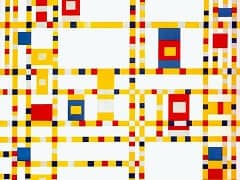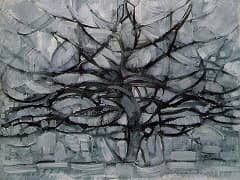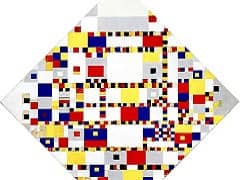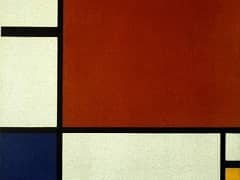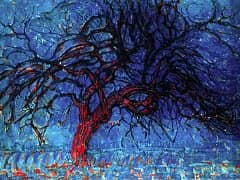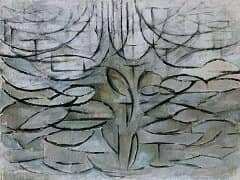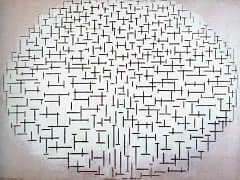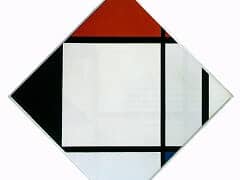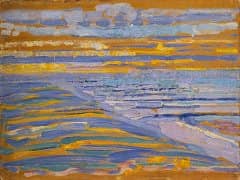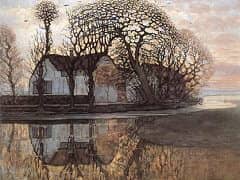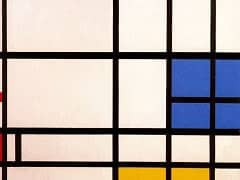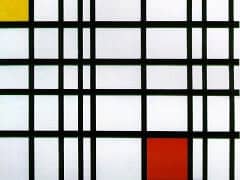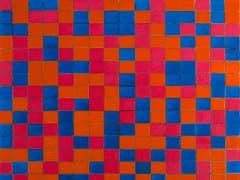Dune II, 1909 by Piet Mondrian
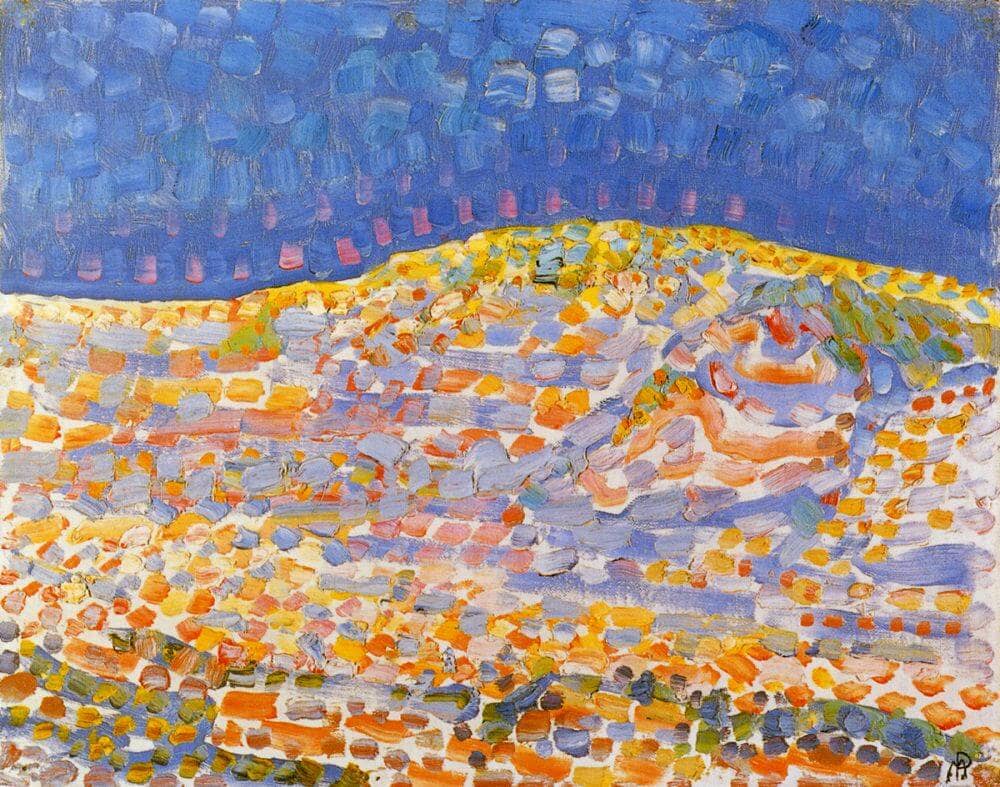
Along with the Lighthouse at Westkapelle, it was largely the motif of the dunes along the Dutch coast that inspired Mondrian during his Zeeland period to a new flight of his pictorial imagination. This dune theme was something new to him, virtually the first appearance in his work of nature in its vastness and all-encompassing magnitude. To be sure, Mondrian had always been a landscape painter, but the subject of the nineteenth-century Dutch paysagist was never nature in the sense of unspoiled creation, of forms and vistas scarcely touched by man. All the places in the Netherlands where Mondrian worked during the first part of his career - the neighborhood of Winterswijk; the surroundings of Amsterdam, especially along the Gein and the Amstel rivers; the town of Uden and other localities in rural Brabant; the village of Oele and the nearby Twente district - had this much in common, that the most prominent features of the landscape were man-made: the farms, the reclaimed land, the Dutch system of canals. Not until he reached the island of Walcheren did Mondrian encounter nature in its endless breadth, which the Netherlands possesses only at the shore, along the line of dunes. This new experience made a deep impression on the artist, as can be seen from the series of studies he made at that time on the theme of the dunes and the sea. The painting here reproduced is an example of this new vision. It is not the first sketch of the new subject - that first sketch may perhaps be identified as a somewhat smaller work on cardboard, possibly dating from the preceding year - but a study of the theme itself, treated in the same manner as the little 1909 painting of the Lighthouse at Westkapelle. The luminist technique (flecks of color set down in small touches) makes the large shapes of the dune merge with the sky above, giving an impression of the unity of nature, of a powerful and yet harmonious motion, of a quiet infinitude.
With these works, the first studies on the theme of the dunes and the pictures of the sea done during the same period, Mondrian began a reorientation toward a large integration of forms, which now once more receive the emphasis over color.

